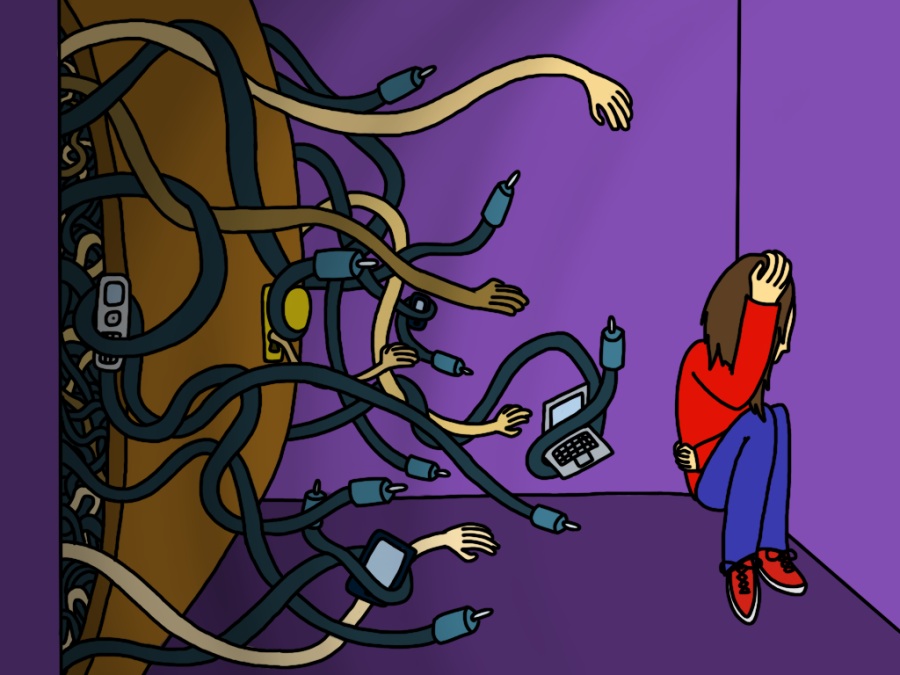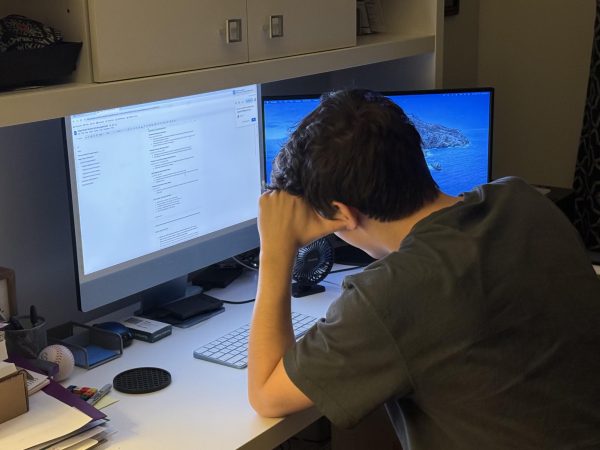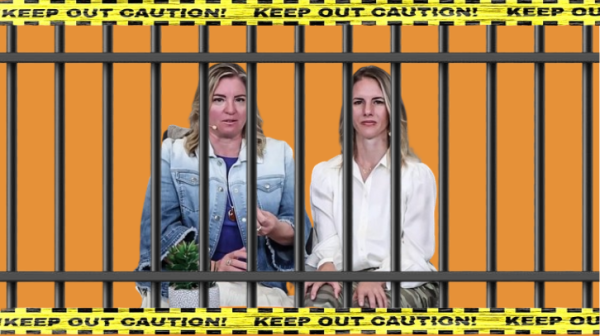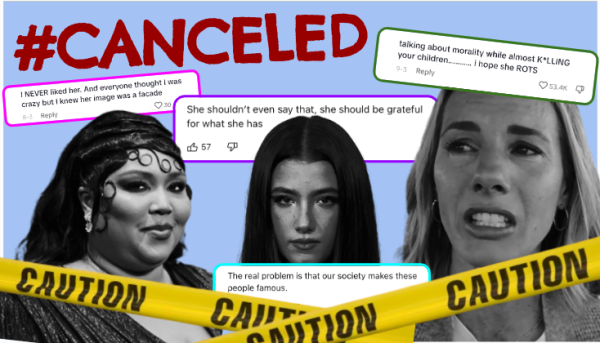Is the world as dangerous as we think it is?
Using technology can contribute to social anxiety.
November 2, 2015
Fifty years ago, children would run around all day with little supervision and little fear. Today, children are much more safe than they were, with seat belts and surveillance cameras wherever we go. Strangely, along with this safety, comes increased fear. Now, with instant news, our fear is brought to life on screen right in front of us. Because of this fear, we try to make society more safe. More safety = greater fear.
With all of the shows and news we have available, we can see murder and violence as it happens. One example of trauma from violence on television was in 2013. Fox News showed a video of a man committing suicide. Later that day, his children saw the video of their father shooting himself. This devastated the man’s children, as well as the rest of his family. Seeing events unfold live makes them feel more real and threatening. The minor children sued Fox News for the live broadcast.
“As the reporters say, if it bleeds, it leads,” said Baltimore police officer Brian Dreitlein. “The bad news for us is good news for the reporters . . .you just see the best of these acts on TV.”
According to a study from the University of Michigan, children can be influenced by watching too much television (and, by extension, exposure to media). By the time a child who frequently watches TV is 18, he has seen 200,000 acts of violence. Watching all of these acts of violence adds onto the anxiety that’s drenched our society.
Though much of the anxiety comes from just television alone, it’s not just the TV that can cause people to be afraid. The use of sell phones and smart phones has increased students’ social anxiety. They are more afraid of face to face interactions.
Because these students have become afraid of face to face conversations, it just drives our technology further. The students keep on using more and more technology, the technology industries have to make more devices to keep up with society’s demands, even if it means we become afraid of the “real” world. Because of the loss of face to face interaction, some people end up with social anxiety.
According to the Anxiety and Depression Association of America, most people who have social anxiety disorder feel that they’re powerless against their anxiety, though they know it’s unreasonable. If their disorder is severe enough, it can interfere with daily lives. Simple things, like going to school, can be difficult for them.
“We use technology now to help with safety,” said Officer Dreitlein, “more than we used technology fifty years ago. Back then, though, they did have technology, there were more there were many loopholes.”
Parents react to this elevated level of fear by trying to make the world more safe for their children. Parents take the children to the bus stop each day and pick them up rather than allow the children to walk home. Another example is the constant contact by texting. Although this is comforting, few children today have grown up with independence.
USA Today wrote an article on two parents in Silver Spring, Maryland who were accused of neglecting their children for letting them walk to a park by themselves. The children were taken by the police to Child Protective Services, finally returning the children home after four and a half hours. The parents were forced to sign a safety plan that prohibits them from leaving their children unattended. This sparked a debate on free-range parenting. They believe that their children are not in danger–and statistics support that, but society thinks they are crazy to give small children independence. What could happen to them?
Free-range parenting is rare today. We hear stories of children getting kidnapped, so naturally parents try to protect their children, keeping them on a short leash. Because of this information that anyone can access online, the fear of the unknown keeps parents from letting go of their children, even if it’s just for a couple hours. According to an article written by Discovery News, children are most likely to be kidnapped either if their parents are divorced, and one parent wants their child back, or by another family member or acquaintance. In fact, according to the Center for Exploited and Missing Children from 1990 to 1995 only 3.1 percent of the children who got kidnapped were victims of strangers.
Amber and Silver Alerts, while helpful for returning the missing child or elderly person, also heighten our fear of abduction.
Our world is covered in surveillance cameras, police, plus many other ways to ensure the safety of our nation’s people. Our technological advances excite us, though they can add onto the anxiety and fear of society and the unknown drags us down. “In a way, what we see on TV shows kind of scares people, they believe that anything they see on TV can happen,” said Officer Dreitlein, “what they see on these shows is very dramatic and not real.”
Many people believe that our current society is safer than it was 50 years ago, but is this sense of safety just an illusion? Maybe the world is not as dangerous as it used to be, so how to we reclaim a sense of confidence and safety?













